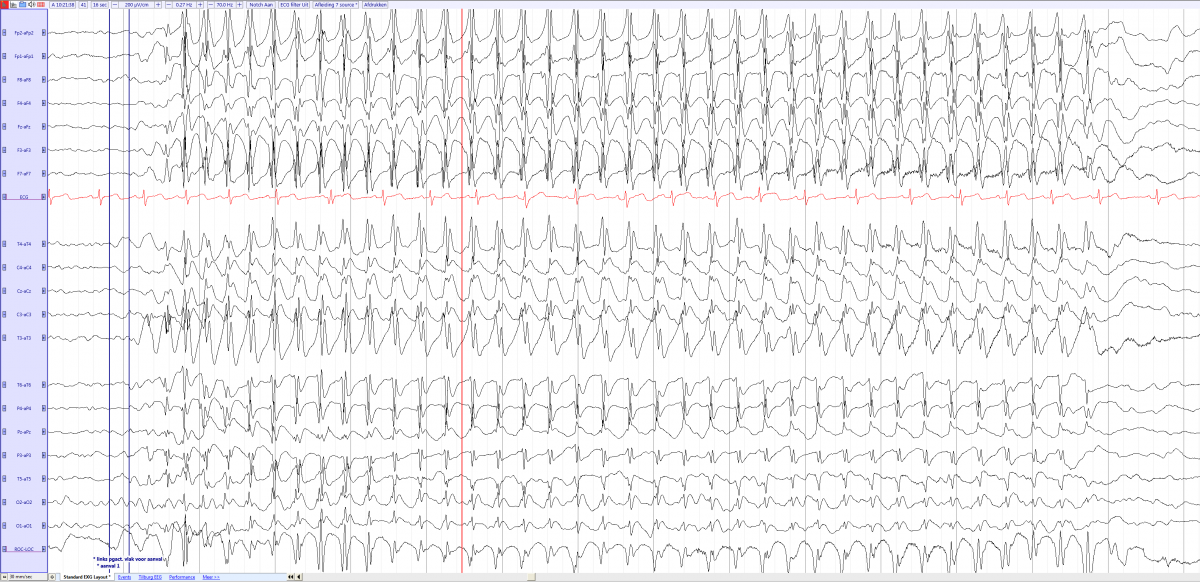Difference between revisions of "Childhood Absence Epilepsy"
From EEGpedia
| Line 16: | Line 16: | ||
==EEG== | ==EEG== | ||
| − | * Generalized [[Spike slow wave complex]] of 3 Hz | + | * Inter-ictal: Normal posterior rhythm, though with frequent rhythmic posterior delta activity |
| + | * Ictal: Generalized [[Spike slow wave complex]] of 3 Hz | ||
* Hyperventilation triggers an absence seizure in over 80% of children with Childhood Absence Epilepsy. | * Hyperventilation triggers an absence seizure in over 80% of children with Childhood Absence Epilepsy. | ||
Revision as of 15:18, 8 June 2018
Background
- Usually in children between 3 and 10 years old
- Most around 5-6 years old when the first absence seizure was seen
- 1 in 15.000-50.000 children
- Siblings of children with Childhood Absence Epilepsy (CAE) have about a 1 in 10 chance of developing epilepsy.
Clinic
- Staring spells during which the child is not aware or responsive
- Eyes may roll up briefly or the eyes may blink.
- Sometimes repetitive movements like mouth chewing.
- Usually the absence last for around 10 seconds and ends abruptly
- After the seizure the child resumes normal activity
- Could be provoked by hyperventilation
EEG
- Inter-ictal: Normal posterior rhythm, though with frequent rhythmic posterior delta activity
- Ictal: Generalized Spike slow wave complex of 3 Hz
- Hyperventilation triggers an absence seizure in over 80% of children with Childhood Absence Epilepsy.
Childhood absence epilepsy in a 4,5 year old girl, with typical generalized 3 Hz spike wave complexes (source)
